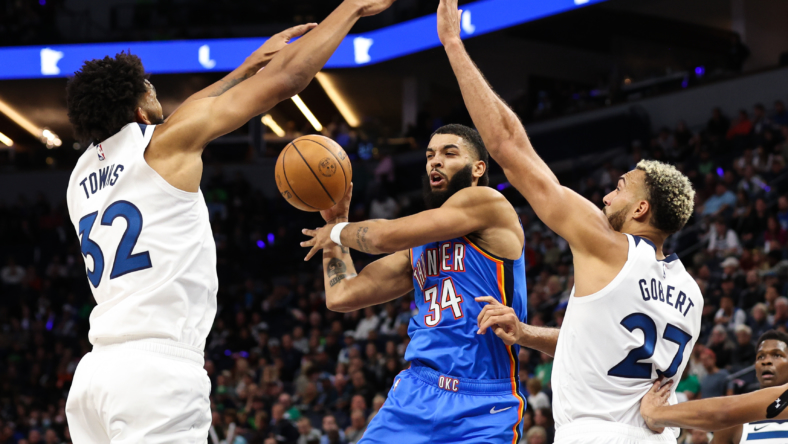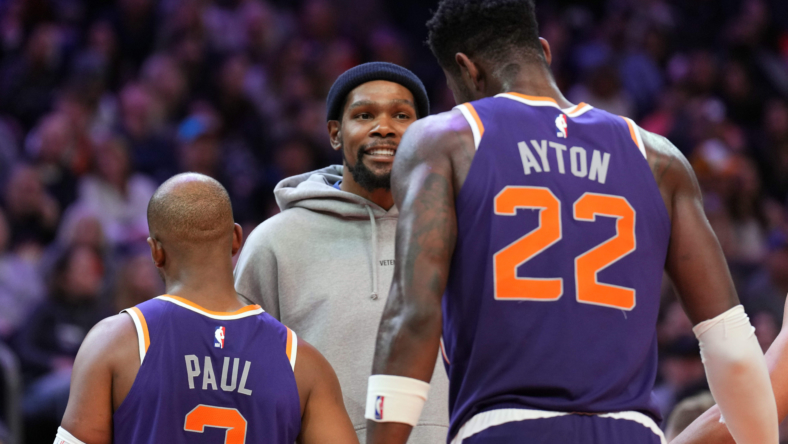
While undeniably blockbuster, the Kevin Durant trade at the deadline wasn’t the most significant
this year. That honor belongs to the Utah Jazz, trading Rudy Gobert to the Minnesota Timberwolves this past summer.
Since the trade was completed, we have entered a new age of inflation, known as A.G. (After Gobert).
There is little argument around how good of a player Gobert is on defense. He is a three-time
Defensive Player of the Year, four-time All-NBA Team member, six-time All-Defensive First Team member and three-time NBA All-Star. Gobert was also the NBA blocks leader in the 2016–17 season and the NBA rebounding leader in the 2021–22 season.
In the 2013 NBA draft, the Jazz, led by the scouting guru Walt Perrin, traded for the skinny Frenchman with the 27th pick, selected by the Denver Nuggets for cash and Erick Green.
Rudy Gobert is one of the best big men in the NBA, but trading for him when you already have another big in Karl-Anthony Towns seemed an antiquated approach. Building through the frontcourt is the opposite of how the NBA is trending. The center position is still valuable, and players of Gobert’s ilk are at a premium, but the league has transitioned into a guards league.
Pairing Gobert and Towns was an awkward idea, to begin with.

This summer, the Jazz, fresh off a smacking by the Dallas Mavericks in the first round of the playoffs and tired of hearing how their two stars (Gobert and Donovan Mitchell) did not enjoy
playing with, or passing to each other, decided to blow it up. Led by Danny “The Trader” Ainge,
the Jazz found a team desperate and dysfunctional enough to take Gobert for a ransom’s haul.
The Jazz got back a massive return: Malik Beasley, Patrick Beverley, Leandro Bolmaro, Walker Kessler, Jarred Vanderbilt, 2023 first-round pick (unprotected), 2025 first-round pick (unprotected), 2026 first-round pick swap, 2027 first-round pick (unprotected), 2029 first-round pick (top-five protected).
NBA trade market wasn’t reset until trade deadline
But this isn’t about whether the Gobert trade worked for the Timberwolves. It’s about what the
trade did to the NBA market. There was a standoff immediately after the Gobert trade, leading up to this month’s trade deadline. The massive overpay the T-Wolves made for Gobert stalled the market, with teams asking exaggerated returns for various players. For example, it was reported the Toronto Raptors wanted three first-round picks for O.G. Anounby, who would remain with Toronto when they surprisingly became buyers at the deadline.
When Kevin Durant asked out of Brooklyn the first time last summer, the Nets struggled to find a deal that bested what the Jazz got back for Gobert. Durant is a top 10 player — some would argue top five — but the returns they received were enough to make amends and play nice. That is until the trade deadline.
Many other disgruntled players stayed put until the deadline, including Kyrie Irving, whose relationship with the Nets front office has been eroding since the vaccine mandate two seasons ago. The Dallas Mavericks acquired Irving the weekend before the deadline on Feb. 6 for a value package around Spencer Dinwiddie, Dorian Finney-Smith, and an unprotected 2029 first-round pick. This was the first trade for a superstar that attempted to reset the market after the Gobert trade.
But it could only happen because of how down the rest of the league was around Irving’s off-
the-court shenanigans, on-the-court undependability, injury history and chaos surrounding his re-signing in Brooklyn.
The Mavericks could potentially lose him for nothing this summer, a repeat of the Jalen Brunson
fiasco last off-season. The instability around Irving’s true worth was not the domino the rest of
the league needed to feel safe to reignite trade negotiations. It still took another six days for
other trades to commence. The trades immediately followed the Irving deal revealed the
league’s hesitancy to pull the trigger on more prominent names. Dwayne Dedmon and Kessler
Edwards were the two players traded before things popped off on Feb. 9.
On that day, the Lakers traded Russell Westbrook to the Jazz in a three-team deal, the Nuggets added Thomas Bryant in four-team trade and the New York Knicks acquired Josh Hart in a four-team deal. Thus far, it mainly was role players and aging veterans moved to new homes.

The market didn’t reset until the Brooklyn Nets finally traded Kevin Durant to the Phoenix Suns for Mikal Bridges, Cameron Johnson, Juan Pablo Vaulet, and 2023, 2025, 2027 and 2029 first-round picks, and a 2028 first-round pick swap plus two second-round picks from Milwaukee in 2028 and 2029.
This deal reset the market to an extent, with the Nets receiving a better package for Durant than
the Jazz did for Gobert but also upping the return for a 34-year-old player at the end of his prime
and with a serious injury history.
The NBA middle-ground, known as “purgatory” for teams being too good for the Draft Lottery and too bad for a deep playoff run, has eroded. Almost every team in the league has a solid young core. Draft capital and possessing a superstar are the delineations that separate teams into contenders or those rebuilding. It makes the decision to buy or sell more crucial than ever.
Whatever future stars are traded this summer or beyond, you can guarantee the asking price will be sky-high until expectations around returns come back to Earth.
Lee Escobedo covers the NBA for Sportsnaut. You can follow him on Twitter at @_leeescobedo
